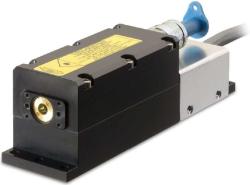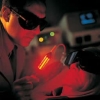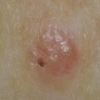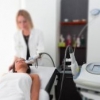Trattamento del melasma con laser Nd:YAG Q-switched, 1064 nm, a bassa fluenza
 Il laser Nd:YAG Q-switched da 1064 nm a bassa fluenza si è da poco dimostrato efficace per il trattamento del melasma.
Il laser Nd:YAG Q-switched da 1064 nm a bassa fluenza si è da poco dimostrato efficace per il trattamento del melasma.
Obiettivo:
Lo scopo di questo studio è stato quello di valutare l'efficacia e la sicurezza clinica del laser Nd:YAG Q-switched, 1064 nm, a bassa fluenza per il trattamento del melasma in pazienti asiatici.
Metodi:
Cinquanta pazienti con melasma sono stati sottoposti a trattamenti settimanali della durata di 15 settimane, con un laser Nd:YAG Q-switched (RevLite®; HOYA ConBio®, Freemont, CA, USA) a 1064 nm con dimensione dello spot di 8 mm, e una fluenza di 2.8 J/cm2. I pazienti e gli investigatori hanno valutato soggettivamente l'intensità della pigmentazione dopo il completamento dei 15 trattamenti settimanali. La valutazione oggettiva è stata effettuata anche con fotografie digitali e con uno strumento di imaging per il pigmento (Janus®, PSI Co., Ltd., KOREA).
Risultati:
Sia i pazienti che gli investigatori hanno valutato il risultato del trattamento come "buon miglioramento", con un tasso medio di miglioramento del 50-74%. Il sistema di imaging per il pigmento ha anche confermato il miglioramento del livello di pigmentazione su tutte e tre le sedi del viso. Nessuno dei 50 pazienti ha mostrato segni di gravi effetti collaterali durante il corso del trattamento.
Conclusione:
Il laser Nd:YAG Q-switched, 1064 nm, a bassa fluenza è un metodo efficace per il trattamento di melasma, senza gravi effetti collaterali nei pazienti Asiatici.
Storia della pubblicazione:
Titolo: Treatment of melasma by low-fluence 1064 nm Q-switched Nd:YAG laser
Rivista: Journal of Dermatological Treatment. doi:10.3109/09546634.2012.735639
Autori: Ji Hoon Sim, Young Lip Park, Jong Suk Lee, Sung Yul Lee, Won Bok Choi, Hyun Jo Kim e Jung Hoon Lee
Affiliazioni:Department of Dermatology, College of Medicine, Soonchunhyang University, Seoul, Korea CNP Skin Clinic, Cheonan, Korea
Abstract:
Background: Low-fluence 1064 nm Q-switched Nd:YAG laser has recently been shown to be effective for the melasma treatment. Objective: The purpose of this study is to evaluate the clinical efficacy and safety of low-fluence 1064 nm Q-switched Nd:YAG laser treatment of melasma in Asian patients. Methods: Fifty patients with melasma underwent 15 weeks of weekly treatments, using a Q-switched Nd:YAG laser (RevLite®; HOYA ConBio®, Freemont, CA, USA) at 1064 nm with an 8-mm spot size, and a fluence of 2.8 J/cm2. Patients and investigators subjectively evaluated the intensity of pigmentation after completion of 15 weekly treatments. The objective assessment was also performed with digital photographs and a pigment imaging tool (Janus®, PSI Co., Ltd., KOREA). Results: Both patients and investigators rated the treatment outcome as “good improvement” on average with improvement rate of 50–74%. The pigment imaging technology system also confirmed the improvement of the pigmentation level on all three locations of the face. None of the 50 patients showed any signs of severe side effects during the course of the treatment. Conclusion: Low-fluence 1064 nm Q-switched Nd:YAG laser is an effective method to treat melasma without serious side effects in Asian patients.





